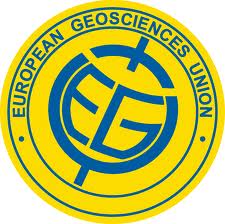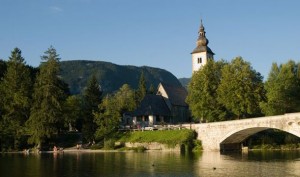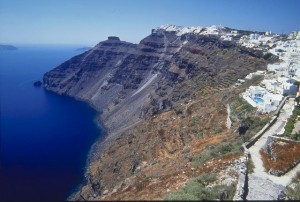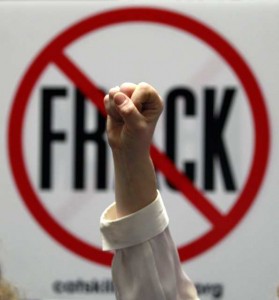 Days two and three of the EGU conference were packed full of interesting talks and poster sessions. Day two was the big geomagnetism day, with open oral and poster sessions. The highlights of my third day at the conference have to be the Stephen Muller Medal Lecture by Leigh Royden of MIT and the Big Fracking Debate.
Days two and three of the EGU conference were packed full of interesting talks and poster sessions. Day two was the big geomagnetism day, with open oral and poster sessions. The highlights of my third day at the conference have to be the Stephen Muller Medal Lecture by Leigh Royden of MIT and the Big Fracking Debate.
Day 2 – Tuesday 9th April – Geomagnetism Day
I spent the majority of my second full day at the conference attending oral and poster presentations related to geomagnetism research. I liked the huge poster halls when they were quiet; with thousands of people presenting each day it can be an overwhelming experience! So, early in the morning I headed down to the poster hall to have a scout at what was on offer. I was most surprised by the variety of research being presented and some of the novel approaches being used. Two posters that really caught my attention were:
1) Is it possible to receive information about the historical geomagnetic field declination  from church orientations? (A.Draxler et al.). I liked the idea because most of our information about the recent geomagnetic field comes from observatories, satellites and historical records. The approach presented in this poster is novel and with a larger dataset might provide greater resolution of the already existing models.
from church orientations? (A.Draxler et al.). I liked the idea because most of our information about the recent geomagnetic field comes from observatories, satellites and historical records. The approach presented in this poster is novel and with a larger dataset might provide greater resolution of the already existing models.
2) I’m a big advocate of science outreach and was really pleased to see a poster presenting a geomagnetism outreach project currently taking place in Austria (Bailey et al.). The idea of the project is study regional variations of the geomagnetic field by establishing geomagnetic observatories across three schools. The students have to choose the location for the observatory and set-up the instruments. The data collected will be available to students and researchers via an open project website.
The oral presentations were just as varied as the work being presented during the poster session, with most aspects of geomagnetism being represented. There were talks on the use of paleomagnetism to debate continental breakups during a number of geological eras; outlining the first results from a newly setup geomagnetic observatory in Croatia; using archeomagnetism to establish the deposition temperatures of the pyroclastic flows of the  minoan eruption in Santorini; investigations of the Upper Jaramillo reversal from lava sequences in Tenerife; and trying to understand geomagnetic jerks better.
minoan eruption in Santorini; investigations of the Upper Jaramillo reversal from lava sequences in Tenerife; and trying to understand geomagnetic jerks better.
Day 4 – Wednesday 10th April – Continental Collisions & to frack or not to frack?
I was free to explore what was on offer at EGU today, as there was no sessions which would directly link to my own research. Luckily, there were some really interesting things on! Medal Lectures are great because they are aimed at a wide audience but showcase some of the best research of the past few years. This is true for Leigh Royden’s medal lecture on continental collisions and the role subduction plays in this process. The talk took the audience through some of the examples of where her work (and that of her collaborators) has made major advancements in our understanding of how geometries of subducting plates and process associated with subduction are related to the structure of systems such as the Carpathian Thrust Belt, Apennine region and the Tibetan Plato. What struck me about the lecture, as well as the quality of the research, was what a great speaker Leigh Royden was. Her slides contained only figures and the story she was trying to tell flowed skilfully well. The content of a good presentation is key, but this particular lecture highlighted to me how crucial delivery of that content is on making it a great talk.
To frack or not to frack – the big debate. 
This is a hotly debated topic and unsurprisingly the lecture room (one of the largest in the conference centre) was packed. This session took the form of a panel discussion, were four experts set out their views on the subject and then the discussion was open to the floor and the panel would take questions. The panel was diverse: a Professor in hydrogeology (Spain), a member of the Energy and Climate Change Select Committee at the House of Commons (UK), the head of section at the Helmholtz Centre (Potsdam) and a representative of Greenpeace (Austria), which of course lead to heated discussions, amongst the panellist and the audience. I came out of the session a little more informed as to what the pros and cons of fracking are and educated about what the difference stances on the matter are depending on your role within the debate. The event had a designated hashtag on twitter #EGUfrack and you can find more details about the debate in this blog post by Matt Herod, of the EGU blog network.
For more EGU action from other blogs and twitter, take a look at:
GeoLog (http://geolog.egu.eu/) and the EGU Blog Network (http://blogs.egu.eu) will be updated regularly throughout the General Assembly.
Keep up to date via Twitter by following (@EuroGeosciences) with the conference hashtag (#egu2013).

Leave a Reply